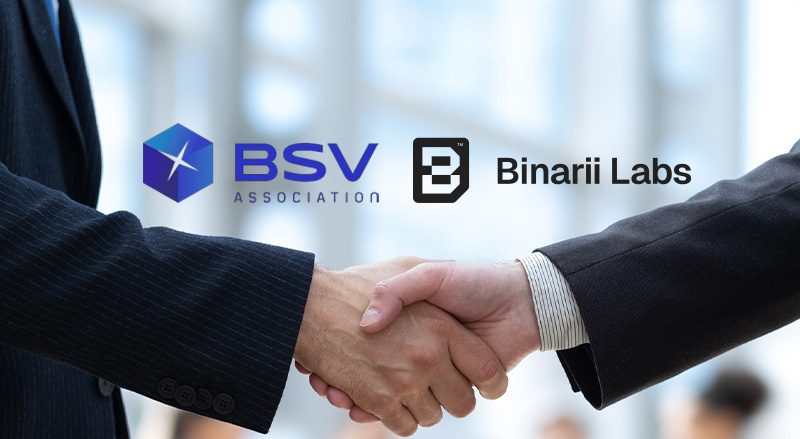The London Blockchain Conference 2023 featured a panel discussion by the BSV Blockchain Technical Standards Committee. The discussion was moderated by Angus Brown, Committee Chair and Co-Founder of Centbee and featured:
- Prof Latif Ladid, Chair of the 5G World Alliance and President of the IPV6 Forum;
Ladid, a distinguished figure in the blockchain and internet technology domains, brought a wealth of experience and expertise to the forefront of discussions. With a profound background spanning various aspects of technology and standardisation, he is known for his significant contributions to the advancement of IPv6, distributed ledger technology, and blockchain integration.
Daugherty shared his 20 years in digital transformation consulting, focusing on blockchain due to cybersecurity issues. He co-founded SmartLedger, which developed Sentinel Node, a flagship product that demonstrates the cybersecurity capabilities of BSV blockchain. He outlined his certifications and role as a blockchain educator and as a subject matter expert on blockchain for the US government.
Pettit transitioned from academia to nChain and is currently serving as the Research Director. There she oversees the IP portfolio’s delivery and strategy. Her experiences include dealing with regulation and technical perspectives in the blockchain space.
The mission of the Technical Standards Committee
Brown explained the origin of the Technical Standards Committee (TSC), which emerged from a wallet workshop organised by Steve Shadders to facilitate communication among technical professionals in the BSV community. Brown emphasised the need for interoperability and extra features beyond basic blockchain transactions. The TSC’s formalised mechanism and focus on standards aim to promote effective communication and collaboration.
Brown highlighted the tangible product of the TSC as written standards available for download, emphasising the importance of the process in achieving a quality product. The ultimate consumers of these standards are developers and business individuals, providing a transparent and accessible framework for the broader community.
Discussing the purpose of Technical Standards
Ladid discussed the dual approach to standards creation—by default or explicitly—and noted that BSV is 50% standardised with IPv6. He emphasised the importance of publishing informative papers on how BSV utilises IPv6, suggesting collaboration with organisations like ISO, ETSI, and W3C. He provided insights on addressing such standardisation bodies and highlighted the lengthy process, estimating about five years to achieve standardisation.
Daugherty stressed the significance of standards in defining technology for legislative purposes, enabling global adoption and efficient communication across the technology stack. Ladid added that promoting standards is crucial in a competitive environment and suggests creating standards by default.
Brown emphasised the importance of standards in unifying technological development and facilitating communication across various technologies. He also recognised that standards are constantly evolving and encouraged users to adopt them and provide feedback to continuously improve them.
The role of patents in standardisation
Another important aspect in this context is patents. At first glance, it might seem counterproductive to standardise and encourage open usage of technology and on the other hand to implement patents that can be used to prevent this kind of open usage.
However, the panel summarised the following advantages of patents in the ensuing discussion:
- Patents are essential for scaling;
- They foster innovation and protect inventors;
- Patents can improve the system by giving advantages to smaller players;
- Unify the community and prevent forking or hijacking;
- Protect participants and users from legal issues;
- Promoting interoperability between systems and applications.
Regulation and standardisation
Regulation is an aspect that is strongly intertwined with the task of standardising technology. Brown asked Bryan Daugherty about his perspective, as he is closely working with regulators in his role as Policy Director for the Americas. He mentioned that regulators are still grappling with understanding blockchain technology.
He noted that the EU has created a sandbox to study these technologies and possibly create standards for the European Union. Daugherty emphasised the need for open communication and collaboration to avoid disruptive actions and theft of intellectual property. He believes that once the blockchain community demonstrates substantive value through standards, definitions, and roadmaps, regulators will likely focus on refining regulations to address nefarious activities and enhance blockchain utility.
Daugherty cited an example from New York City, where millions were spent on blockchain projects that failed to scale or make a significant impact. He advocated for strategic investment in projects that have a substantial and beneficial impact on a broader scale.
The BRC Project
Michaela Pettit discussed the BRC (Bitcoin Requests for Comments) project, a community-led effort to bridge the gap between the TSC and the absence of technical standards. The BRC aims to introduce a pre-standardisation approach, making it easier to contribute ideas that may eventually become part of the TSC.
Michaela expressed excitement about the collaboration between the TSC and VRC, highlighting the flexibility and receptiveness to community feedback within the TSC. Angus Brown voiced public support for the BRC process and encouraged them to participate in the BRC project.






